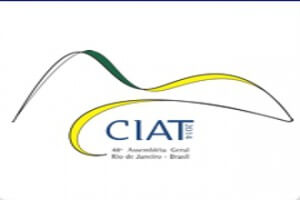The debate in Rio
Commentaries prior to the 2014 Assembly
 The 48th CIAT General Assembly will take place on May 5 to 8 in the wonderful city of Rio de Janeiro.
The 48th CIAT General Assembly will take place on May 5 to 8 in the wonderful city of Rio de Janeiro.
Technical issues of the Assembly will be centered on “The use of Information and Communication Technologies in the Tax Administration”. The profile and the technical program can be downloaded from our Web site. The topics include the use of electronic documents, considering alternatives and solutions for small businesses; ICT in the delivery of services; and, finally, the use of technology for tax control.
We will have a roundtable discussion where we expect the participation of executives responsible for public issues in two of the most important technology companies; Oracle and Microsoft; also from SERPRO, a Brazilian Government company which provides the technology services needed by the Receita Federal of Brazil; a representative of the Public Revenue Administration of Argentina AFIP; a CIAT representative (that hopefully will be me) and with the superb moderation of Professor Jeffrey Owens, who was the Head of the OECD Tax Division.
The composition of the panel is extremely interesting. The AFIP develops all its software solutions internally. In Brazil, they are essentially made by a State-owned company. A mixed scheme is used in other tax administrations: partly home-made, partly outsourced. In some cases, the software parts contracted or purchased are superior in number to those developed internally.
As far as I know, there is no scientific study showing that the quality of the final product is better in one or another case. There are successful experiences of both schemes across the public and private sectors. Also in both, there are failures. It is to note that when the failures include the participation of the private sector, an ugly lawsuit may result from the process.
The incorporation of external solutions may have also different seasonings today. To bid for a customized software, or to buy a commercial ready-to-wear package (COTS(1); to specify the requirements, with or without external consulting, and hire a software factory to build it; to buy a “key in hand” solution, or rent it with a SaaS model(2); or import and adapt a solution that someone else, supposedly similar to us, already uses successfully; to invest in current solutions so they grow and evolve or to design everything from scratch; and yet this implies decisions about the strategies to migrate; to buy infrastructure, communications, and the facilities or to pay for the services (IaaS(3) or PaaS(4)).
But in any case there are factors which, depending on the particular reality, can encourage or condition one or other model. The scope of work is certainly crucial. For example, for sub-national administrations in countries with high decentralization in tax matters there is a range of solutions implemented in other States, provinces or municipalities; developed and marketed as COTS products or not, that can perhaps more easily be adjusted to an environment than another one coming from a National Tax Administration, from a different country, with a different Tax System. Sharing solutions could also be easier at the subnational level, for example, several municipalities in a same State can share the same physical installation.
There is no doubt that size matters. A small administration, with a minimum budget for networks and systems maintenance can face very significant challenges to acquire a system, and worse challenges to maintain it or develop it from scratch. And with a smaller implantation, in my opinion, the technological choices will be more critical for success or failure. For example, to face the risk of the long-term loss of qualified personnel, one could choose one of the two following opposite strategies: the first one would be to find the most popular tools on the market, those that are being taught in universities, those for which supply and demand are strong, so the replacement of qualified personnel, at least for the tools, would be an easier process; the second would consist in selecting less popular market tools, those that no one else is studying in the local environment, so the persons who operate and know the system would stay because their skills would not be attractive for the market and it would be more difficult for them to migrate.
I think that there are more questions than answers in this post, but for now, I only look for triggering the discussion, encourage further questions or comments, or who knows, maybe one of you, dear readers, would write a post on this topic.
Saludos y suerte
1,067 total views, 3 views today
